Swiss Delight
- Tyler McDowell
- May 25, 2019
- 5 min read

Swiss International Airlines
In the aftermath of September 11th 2001, the aviation industry around the world was in turmoil as new security and safety laws were introduced swiftly, with many business and leisure holiday makers avoiding flying following the tragic events in the USA. In addition, with the increase in oil prices following the American-led conflict with Iraq, many airlines found themselves in great difficulty. One of them was Switzerland’s flag carrier Swissair.
On September 2nd 1998 HB-IWF, a McDonnell-Douglas MD-11, operating flight SR111 from New York to Geneva, crashed just off Nova Scotia due an in-flight fire in the cockpit, with the loss of the 228 people on board. The last few years of the 1990s had not been kind to the carrier, which had, up to then, enjoyed a stellar reputation around the world. Unwise decisions over expansion however, coupled with its ties to Belgian airline Sabena as well as the world-wide troubles, meant the carrier’s collapse on October 3rd 2001. Unlike most national airlines, Swissair was not state-owned and as a private company, there was no government bailout.
The failure caused shockwaves across Europe and especially in Switzerland itself, a nation known for its financial acumen. Something had to be done to restore the country’s reputation and regional airline Crossair quickly filled the void. To reflect its new status representing its native country, after some reorganisation the name was changed on March 31, 2002 and Swiss International Airlines was born. Below: - on board a Swiss RJ100. (Tyler McDowell)

The new company operated a mixture of aircraft from both airlines with a fleet that consisted of the Airbus A320-family, Airbus A330-200, McDonnell-Douglas MD-11, McDonnell-Douglas MD-80, Saab 2000 and Avro RJ100/RJ85. By 2005, only the Airbus A320-family and Avro RJ100 remained on short haul operations and the last MD-11 was retired allowing a fleet of Airbus A330/A340-300 aircraft to operate a more streamlined service from Zurich and Geneva with a small regional base in Basel.
Swiss subsequently became part of the Lufthansa group, one that also contained neighbouring Austrian Airlines. At the same time, Swiss became a member of the Star Alliance. The successor to SABENA, Brussels Airlines, also came into this group in the mid-2000s.
Since then a major fleet renewal has taken place. In 2016 the airline added its first Boeing 777-300(ER) to its fleet, making this the only time that the airline (or its predecessors) had operated a Boeing aircraft type other than the 747. Apart from the 747 (the -200 and -300 were both operated), Swissair had always been a Douglas devotee, using the early propeller types before the jet-powered DC-8, DC-9 and DC-10 aircraft entered service. The Boeing 777s are also replacing the four engined Airbus A340-300 fleet, with these planes retiring for scrapping or transferring to the airlines charter airline subsidiary Edelweiss. With the Avro fleet now also ageing the airline acquired a brand new regional aircraft, being the launch customer of the Bombardier CS-100/300 aircraft (Now branded as the Airbus A220). In August 2017, the final Avro RJ100 flew for Swiss and almost two years on, the airline operates twenty-three examples of the new type with more on order to expand the network out of Zurich and Geneva. The Airbus A319 fleet is also due to retire as the CS-300/A220-300 replace them. The airline is also expecting the latest Airbus A320-NEO & A321-NEO to replace older generation aircraft.

Left - enroute on an A320 (Tyler McDowell)
The memories of Swissair are still fresh however and the airline seems determined not to repeat the mistakes of the past. With a young fleet of modern aircraft and well-established hubs in a very attractive and picturesque country, Swiss today looks as the Swiss would like it to be.
Below left - onboard catering is very equable, particularly chocolate, for which Switzerland is well-known. (Tyler McDowell)

The Door to Switzerland: Zurich
As well as being an efficient gateway, Zurich’s Kloten Airport has one of the best viewing facilities anywhere. Renowned by aviation enthusiasts around the world the viewing deck costs 5CHF to use although entry is free if you have a boarding pass for a flight leaving or arriving that day.
The airport has been the city's main gateway since 1945 and is the primary hub for Swiss International Airlines, as it was for the carrier’s predecessor, Swissair and like most airports, it has grown and changed over time. It rivals Geneva in terms of being Switzerland's major airport but despite the two cities being the main aerial points-of-entry to Switzerland, neither is the nation's capital. That honour goes to Bern, in the north of the country, which has a small regional airport called Bern-Belp. Bern is around 2 hours drive from both Zurich and Geneva, and with its own airport too small and surrounded by mountainous terrain, major airlines with large aircraft can't easily operate there.
Zurich Kloten was state-owned from 1945 until 2000 and with a 1999 referendum favouring its sale, the airport it was subsequently privatised. Patrick Candrian has been the Airport's Chief Executive Officer (CEO) since early 2015, taking over from Thomas Kern, who had previously been in the CEO position for seven years.
The airport has received numerous accolades; since 2004, Zurich has been rated Number 1 Airport in Europe by the World Travel Awards and was consistently placed in the top five world-wide between 2009 and 2013. In 2018, Skytrax rated Zurich No.1 for Airport Security Processing.
Also in 2018, over 31 million passengers arrived, departed and connected at Zurich. 493,000 tonnes of freight passed through the airport in the same year, in both cases seeing an increase in traffic compared to 2017, with a 5.8% increase in passenger numbers and for cargo movements a rise of 0.6%. Total aircraft movements in 2018 amounted to 278,458, a 3% increase from 2017.
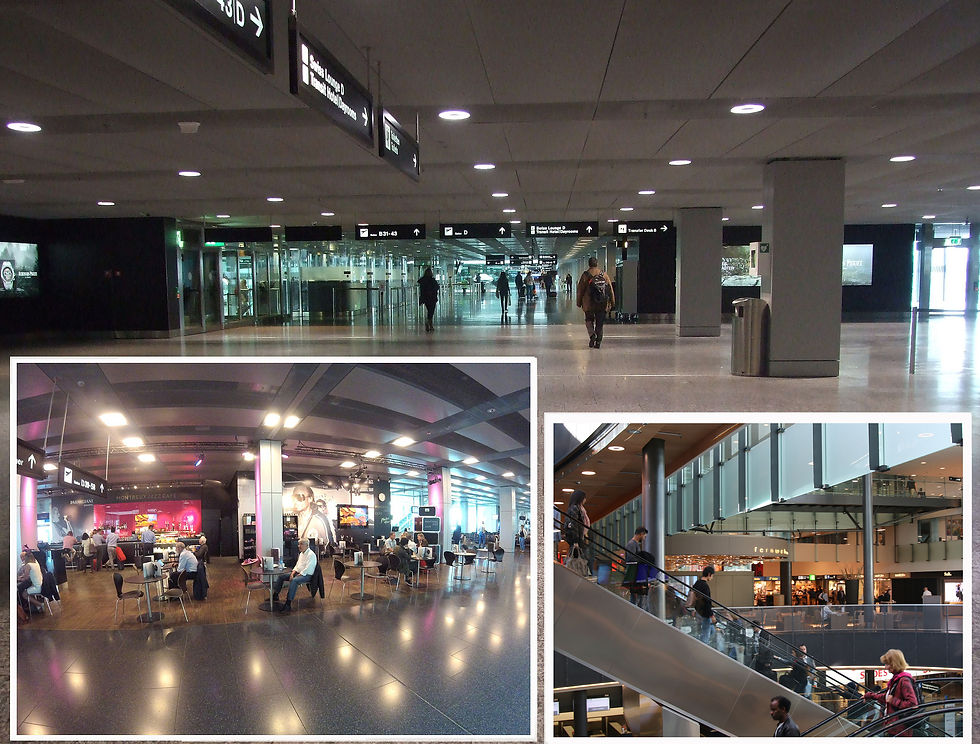
Above - Zurich's terminal is spacious and passenger-friendly. (Tyler McDowell)
Below - one of Swiss International Airlines' lounges (Tyler McDowell)

206 destinations are served worldwide with sixty-five routes outside of the European Continent and 141 within the Europe. Swiss and Edelweiss make up 58% of traffic, with the two airlines being based at Kloten and the top five are rounded off by easyJet and Eurowings with 3% each and 2% coming from British Airways. Looking at the figures, it won't come as a surprise to see London the airport’s top destination, just shy of two million passengers flying to or from Luton, Heathrow, City and Gatwick. Berlin, Amsterdam, Vienna and Paris make up the remaining top five and seventy-seven airlines operated flights to Zurich in 2018.
The airport is linked to the city of Zurich and local areas of Switzerland via the trains, trams and buses from a main public transport facility just outside the main Terminal. Services run frequently and efficiently. The trams take approximately 10-15 minutes to run from the Airport to the City Centre, with the fares starting from 4.40CHF.
Switzerland is undoubtedly a beautiful country and not only is Zurich an attractive destination in its own right, but its airport continues to be well-used, well run and much appreciated by both passengers and enthusiasts.
Below: The observation deck provides a good view of most movements (Tyler McDowell)
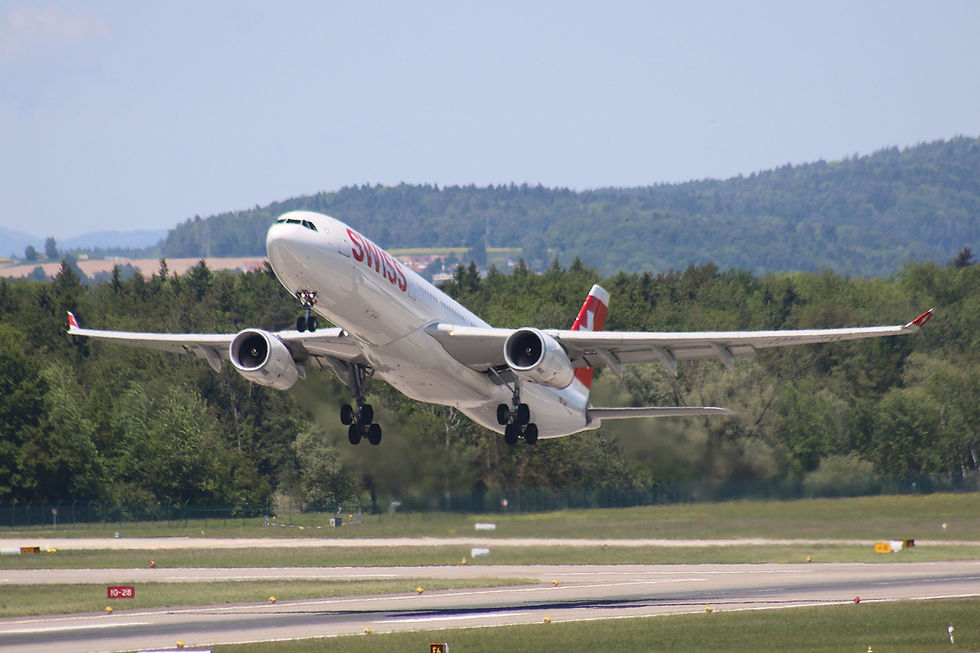
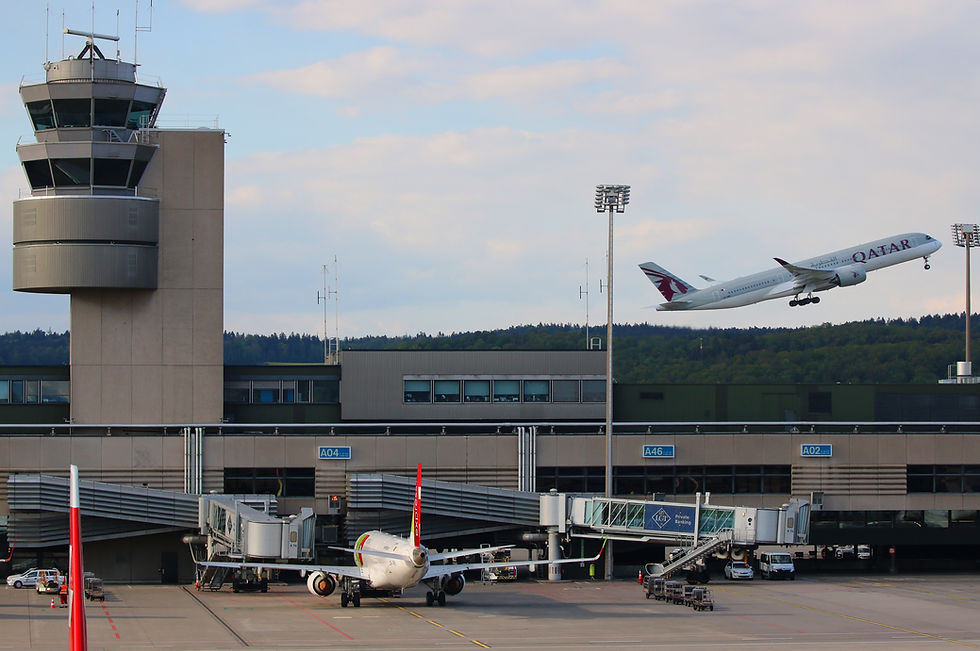
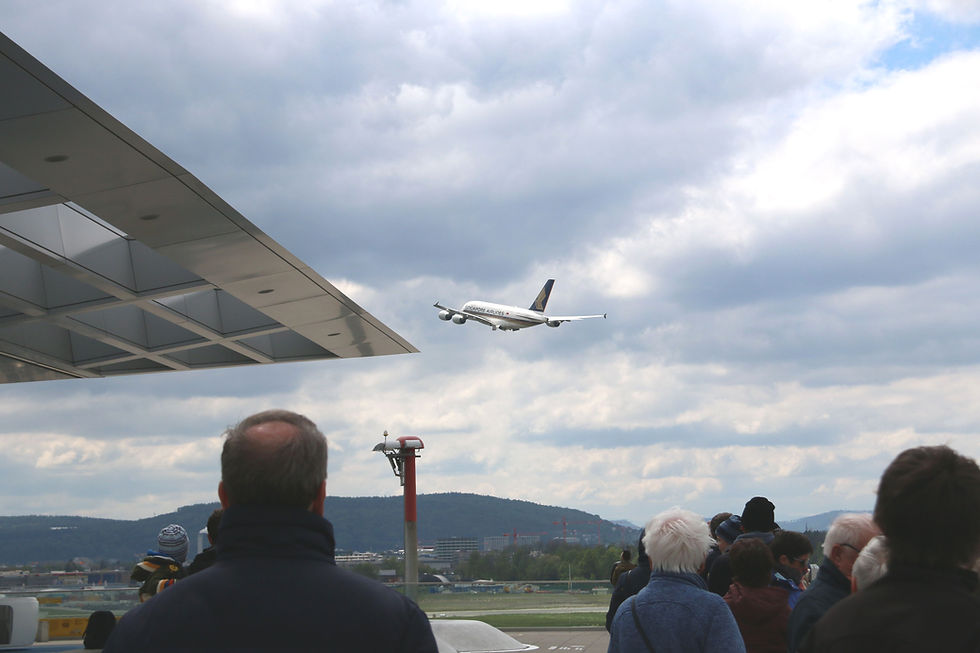

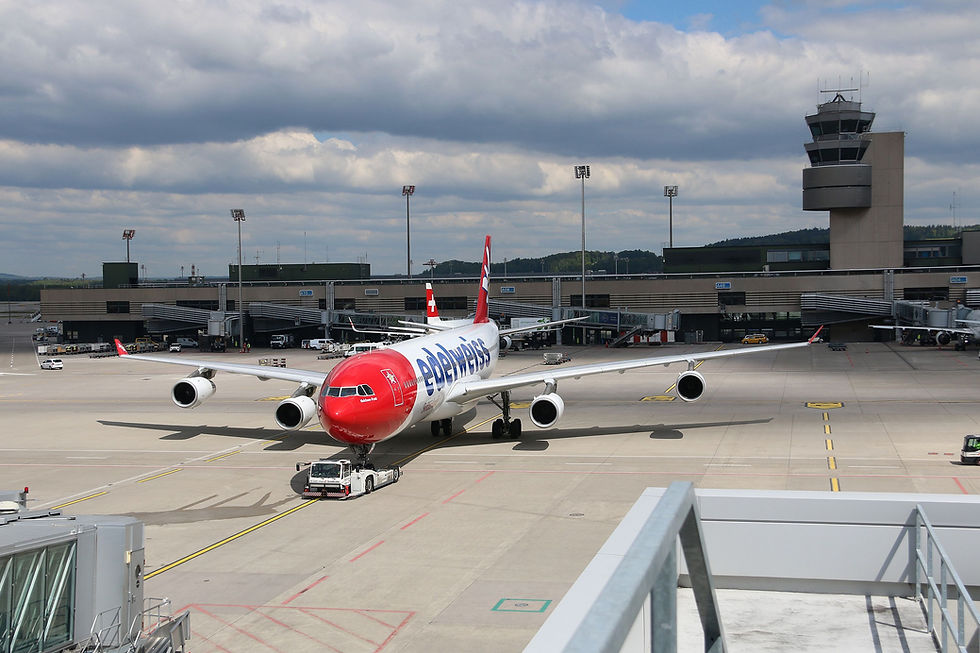

© Tyler McDowell 2019.



